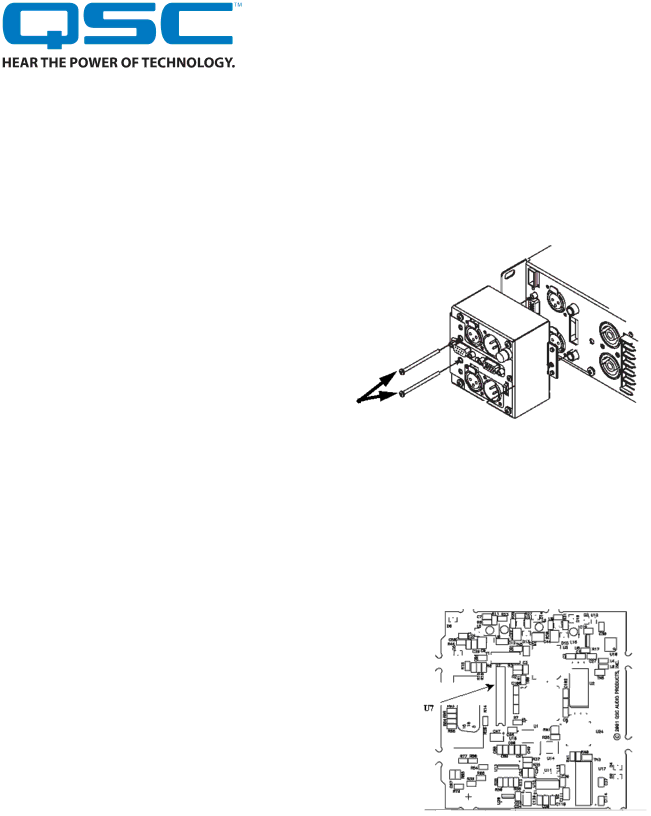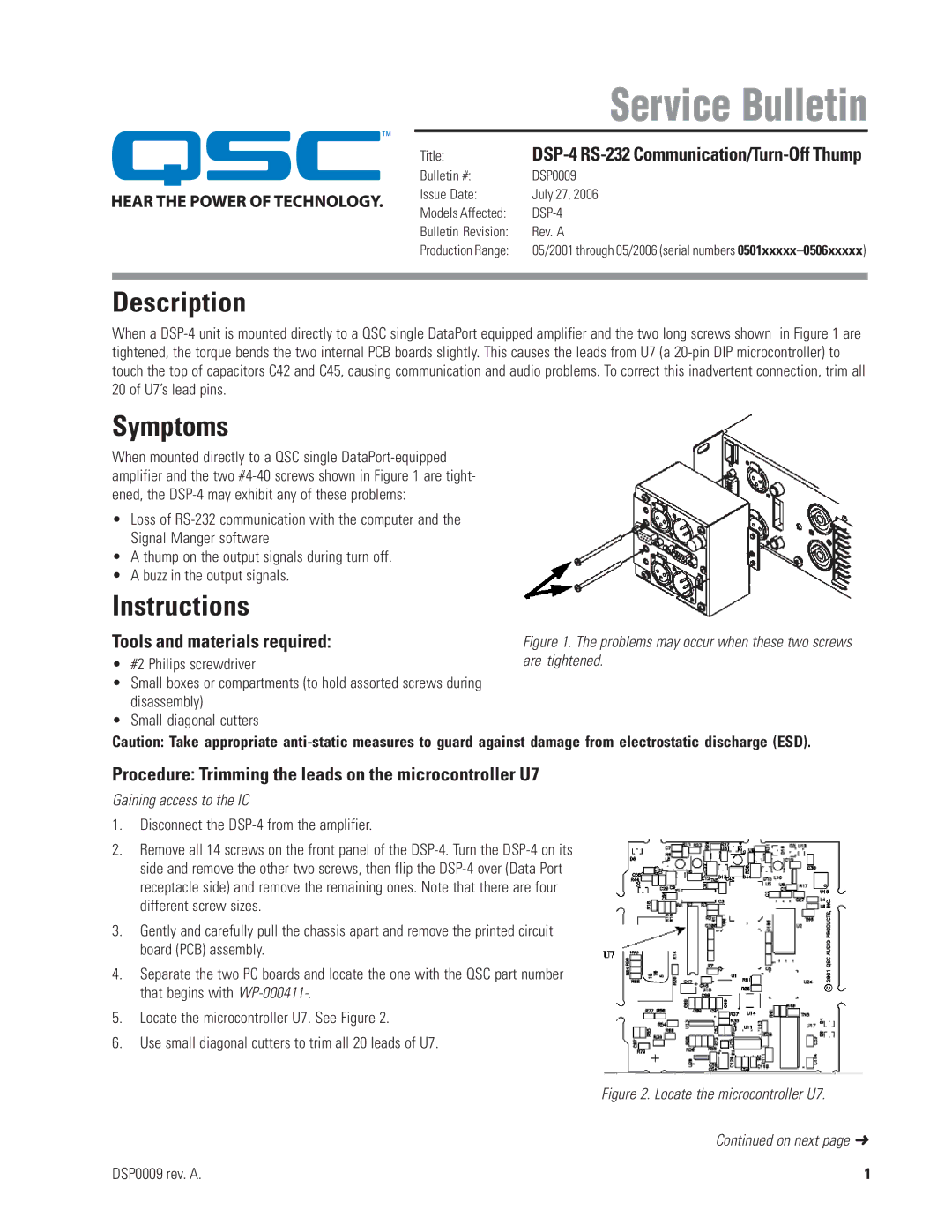DSP-4 RS-232 specifications
The QSC Audio DSP-4 RS-232 is a cutting-edge digital signal processor designed for professional audio settings, offering unmatched flexibility and precision in audio management. It is particularly suited for installations in venues such as theaters, conference rooms, and large entertainment spaces where high-quality audio control is crucial.One of the standout features of the DSP-4 is its comprehensive signal processing capabilities. The device comes equipped with four input and four output channels, allowing users to manage multiple audio signals simultaneously. This multi-channel configuration enables seamless routing and manipulation of audio sources, making it ideal for complex sound environments.
The DSP-4 utilizes advanced algorithms for audio processing, ensuring high fidelity and clarity. It includes a range of built-in effects like equalization, dynamic processing, delay, and crossover management. This ensures that audio engineers can tailor the sound to meet the unique needs of any event or venue, optimizing the listening experience for audiences.
Connectivity is another strong feature of the DSP-4. It supports RS-232 control, which allows for remote control and integration with other systems. This capability is essential for automated environments where audio management needs to be synchronized with lighting and video systems. Additionally, Ethernet control options provide more user-friendly interfaces for monitoring and making adjustments.
Moreover, the DSP-4 boasts a user-friendly interface with a graphical display that simplifies programming and operation. Users can easily configure settings and recall presets, making it accessible for both seasoned audio professionals and less experienced operators alike.
The DSP-4 is built for durability and reliability, designed to withstand the rigors of professional environments. Its robust construction ensures that it remains operational under various physical conditions, establishing it as a staple in professional audio setups.
In summary, the QSC Audio DSP-4 RS-232 combines advanced signal processing, flexible routing capabilities, and ease of use into a single solution for professional audio management. Its features cater to a wide range of applications, solidifying its position as a powerful tool for enhancing audio performance in diverse environments. The integration of cutting-edge technologies and user-friendly design make it an excellent choice for audio professionals seeking to elevate their sound systems.

